Origins of Writing
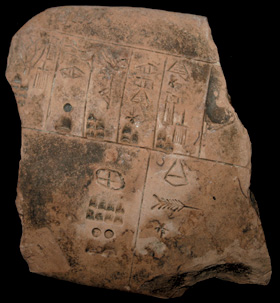
Proto-Cuneiform Clay Tablet

Proto-Cuneiform Clay Tablet
Proto-Cuneiform Clay Tablet
3200-3000 B.C.
Ancient Sumer (Iraq)

Proto-Cuneiform Clay Tablet
Proto-Cuneiform Clay Tablet
3200-3000 B.C.
Ancient Sumer (Iraq)
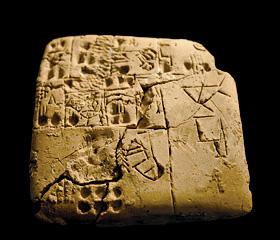
Proto-Cuneiform Clay Tablet
Proto-Cuneiform Clay Tablet
3200-3000 B.C.
Ancient Sumer (Iraq)

Pottery Ink Well
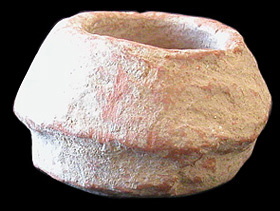
Pottery Ink Well
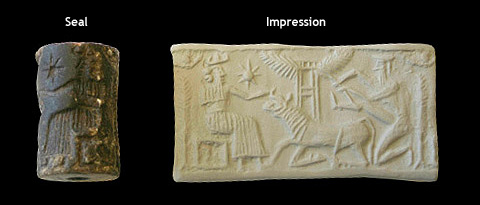
Brown Marble Cylinder Seal
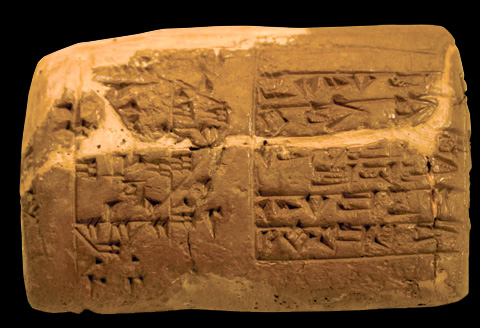
Cuneiform Administrative Tablet
Old Babylonian Empire (Iraq)
The tablet was restored from several fragments with some loss of text. Yet, most of the writing remains intact and easily read. Administrative in nature, the document contains surveys of two plots of arable land. The plots are in strips and described with detailed measurements. Following the descriptions, the area of each plot is summarized.
Field: […]mahgisdi[b…..]
Adjacent to the A’urina canal.
From it:
10 iku, Mr. Shemash-um[……..]
10 iku, Mr. Lugal-zimu
the two; soldiers to the king
From it:
12 3/4 iku, Mr. Diri
Field: Sagkidu
[Canal A] ‘urina
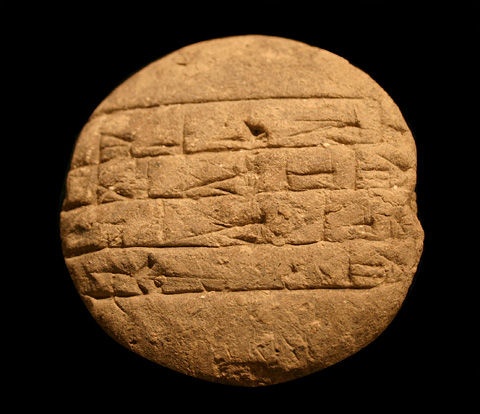
Cuneiform Round School Tablet

Cuneiform School Tablet
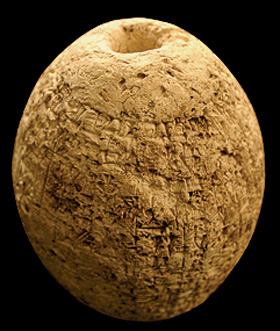
Cuneiform Barrel
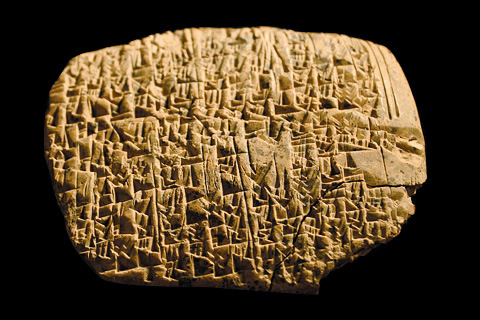
Cuneiform Ritual Tablet
Cuneiform Clay Tablet
1900-1700 B.C.
Old Babylonian Empire (Iraq)
Contains a ritual for the Goddess Ishtar
(ancient goddess associated with Mother Earth)
The Old Babylonian clay tablet has text in four columns, each with fifteen to eighteen lines of cuneiform. Three corners are broken off, but the tablet is essentially complete. The cuneiform script is very well preserved on one side, less so on the other, and contains a ritual text about the goddess Ishtar.
One section reads:
“…for the bath of the Daughter-of-An; 1 sila of oil for the throne’s anointment; 1 ram, 1 measure of bread, 1 measure of beer: the divine banquet.”
Tablets addressing Old Babylonian rituals are rare, and thus the text displayed here is important historically.
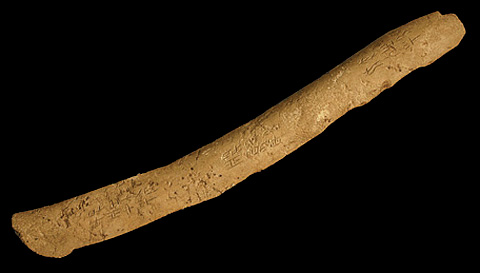
Chinese Oracle Bone
1300-1100 B.C.
Late Shang Dynasty of Anyang
China
This bone was owned by the Philosophical Research Society and was in private ownership before the 1950’s. Since that time no further bones have been permitted to leave China.
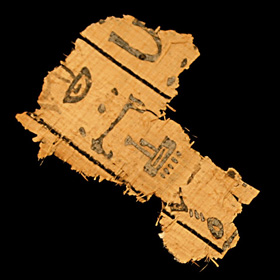
Hieroglyphic Writing on Papyrus
Fragment of the Book of the Dead.

White Marble Stamp Seal
